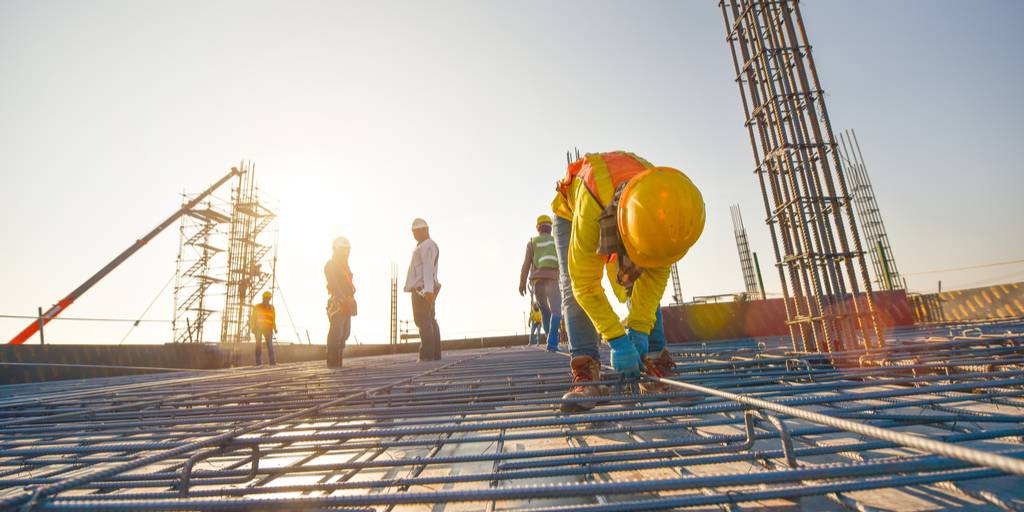Developing effective communication is essential to the success of any work environment. Communication is especially crucial on construction sites where safety, productivity, and efficiency are of the highest priority. To make sure your construction site is as safe as possible, follow these simple tips to keep your crew consistently on the same page so they can function as a cohesive team.
Establish a Chain of Command
In order to minimize disruption on a construction site, you must have communication protocol in place and ready to implement at a moment’s notice. That means each and every crew member must know which types of situations they can handle on their own, as well as when they need to communicate directly with a supervisor.
Each crew member should also be made aware of who they report to, as well as when and why. They also need to have a means of communication such as a cloud-based database where everyone can collaborate in real-time. Using the right tech for your construction company goes a long way in reducing error.
Of course, face-to-face communication is always preferable. For larger projects, using a two-way radio system a simple and effective way to facilitate real-time communication on site. However, rather than just giving everyone a radio and letting them sort it out, you must make sure everyone knows who they need to contact (and how to reach them) if a situation should arise.
Establish Hand Signals
Hand signals help your crew to operate like a well-oiled machine. After all, yelling isn’t efficient or practical, not to mention it can cause problems with the neighbors. In extremely noisy environments, two-way radios can be used in conjunction with earpieces or noise-canceling headsets, but it’s always smart to have a backup plan in place too.
While hand signaling shouldn’t be your primary means of communication, incorporating signals into your communication strategy helps to solidify every verbal message. Signaling can also save time when verbal communication isn’t necessary.
Hand signaling also helps to overcome language barriers, naturally improving jobsite safety. If there are crew members who don’t speak the same language as the majority of the crew, establishing keywords, phrases, and corresponding hand signals is an absolute must.
Keep Communication Succinct
Too much information can be overwhelming. While you do want to make sure that your message is delivered loud and clear, you also want to make sure that it’s easily digestible.
Make sure that all of the necessary information is there, but try to find a way to phrase it so that it’s memorable and easy to pass along. Communication among a work crew can be like a game of telephone—it’s easy for the message to become jumbled along the way.
Start Each Day With a Meeting
It’s easy to get caught up in a routine, especially on projects that last for months or even years. Even if your crew feels comfortable with their daily tasks, it’s critical that supervisors take steps to keep them engaged.
At the beginning of every workday, you should get everyone together and make sure there’s no confusion. Give your team the opportunity to ask any questions and speak their mind. Even if the meeting just lasts a quick 30 seconds, everyone will be able to work more confidently, knowing there are no looming issues that have gone unaddressed.
Foster a Positive Work Environment
“There are no bad questions.” It’s a classic workplace adage that holds especially true in construction environments. It’s so important that everyone feels comfortable speaking up, and it’s up to the supervisors to encourage communication.
Even if someone asks a silly question, it should be met with genuine positivity and help. All it takes is one sarcastic reply to ensure that they never speak up again. Take steps to boost morale—grumpy workers don’t communicate as effectively as those who feel a sense of comradery with their crew members.
Developing solid communication among your workers starts with the supervisor. The leader of the project sets the mood. In order to improve communication among everyone, you must first improve your own communication. Over time, workers will follow your example. It may take time and effort, but eventually, communication should become a two-way street.
Kenneth Klyberg is the Chief Operating Officer of the two-way radio supplier, Discount Two-Way Radio. With over 30 years in the communications industry, Kenneth continues to work on educating his team and his customers on the latest technology and updates in the field.
